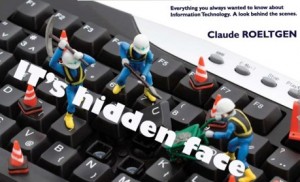One Million Dollars or One Year
 As we’re nearing the end of the 2010 planning cycle, it’s as good a time as any to reflect on how we plan projects and whether our processes are as effective as they could be. At one point or another, everyone working in IT has asked themselves, “Why is everything so complicated?” Priorities change, projects grow in scope, budgets shrink. All the while, we’re forced to explain to senior management what it is we actually do.
As we’re nearing the end of the 2010 planning cycle, it’s as good a time as any to reflect on how we plan projects and whether our processes are as effective as they could be. At one point or another, everyone working in IT has asked themselves, “Why is everything so complicated?” Priorities change, projects grow in scope, budgets shrink. All the while, we’re forced to explain to senior management what it is we actually do.
I recently read “IT’s Hidden Face,” a book written by Claude Roeltgen, the former CIO of Credit Suisse in Luxembourg. It explores the inner workings of an IT shop (without a single spaghetti diagram!), and I came away realizing it might be the first time I read a book that talks comprehensively about management process and procedures of IT in a no-nonsense manner. Roeltgen ties several sections of the book together with stories and anecdotes that at first appear to be non sequiturs. But after digesting the content, I found that all the pieces worked together nicely (much like an IT department, no?). Take, for example, a short chapter entitled, “The punchcard sorter,” and his tale of eating lobster for the first time.
IT planning never truly ends and it tends to eat up more time than we think. But if CIOs and their teams are to lead the charge to get leaner in planning, they must also help their counterparts on the business side make sense of the “organized jungle,” a term Roeltgen uses to describe the state of IT in 2009. A jungle of any sort is a challenging environment to map out, but Roeltgen does an excellent job of diagramming the IT shop.
The book devotes significant space to “one million or one year,” the running joke that IT departments reply to project requests with one of two answers (or sometimes both): “It will cost one million,” or “It will take one year.” In my opinion, this section (chapter three) of “IT’s Hidden Face,” is the true heart of the book and I’d almost suggest reading it first. It’s essentially a map for anyone who’s ever wondered about the myriad reasons IT projects can become so expensive and laborious.
Roeltgen describes the notion of near-endless planning in chapter five, “Change is the only constant.” As he writes, change brings instability and, therefore, instability is inevitable and permanent within the IT department – as it is in most facets of business. “It is permanently necessary to solve problems that others have created.” I think we’ve all grown accustomed to this truism, which also gets to the heart of why planning never ends.
IT planning for most companies originates with several IT leaders (with titles like business consultants and portfolio managers) eliciting business requirements for the year, part of a “bottom-up” process. But a CIO needs the ability and the platform within his or her company to say: Here are the 10 projects on our multiyear roadmap and these will guide the majority of our investments, thus greatly streamlining the process. But at the same time, we need to resign ourselves to the fact that nothing we work on today has a great deal of staying power; it’s simply the nature of technology. Roeltgen notes that when we start projects for new systems, we often know from the outset when that project will be decommissioned.
If you’ve read Roeltgen’s book, I’m interested to get your thoughts. Also, in the name of friendly competition, I’ll award copies of “IT’s Hidden Face” to the three best comments about IT’s inner workings or related personal anecdotes about the bizarre world of IT (as judged by me). Please note, this will be more of a subjective “AP Coaches’ Poll” ranking as opposed to the computer jiggery of the BCS rankings.
Pingback: Tweets that mention CIO Book Review | ITs Hidden Face | Claude Roeltgen — CIO Dashboard -- Topsy.com()
Pingback: uberVU - social comments()